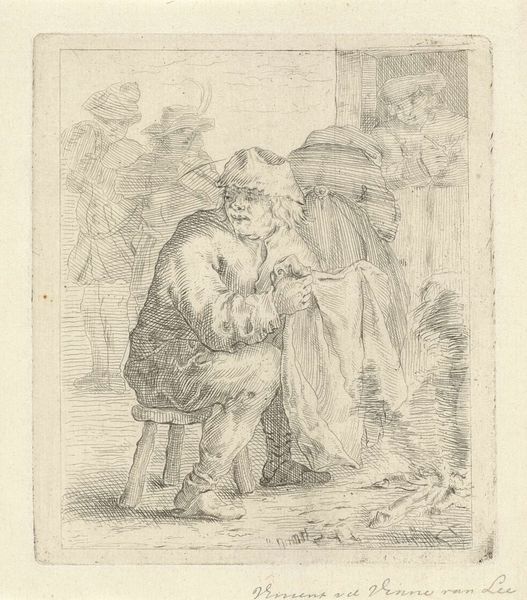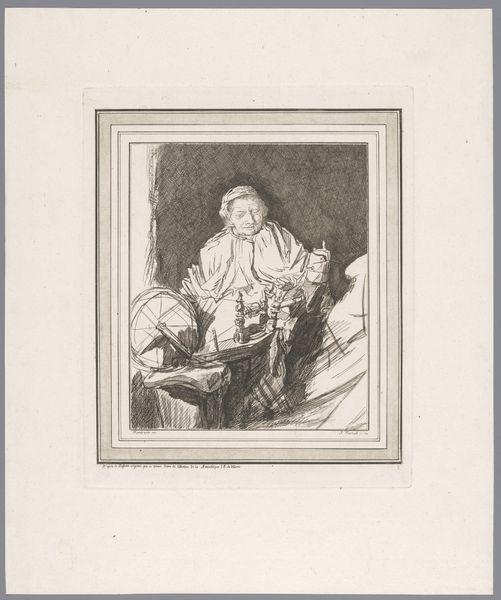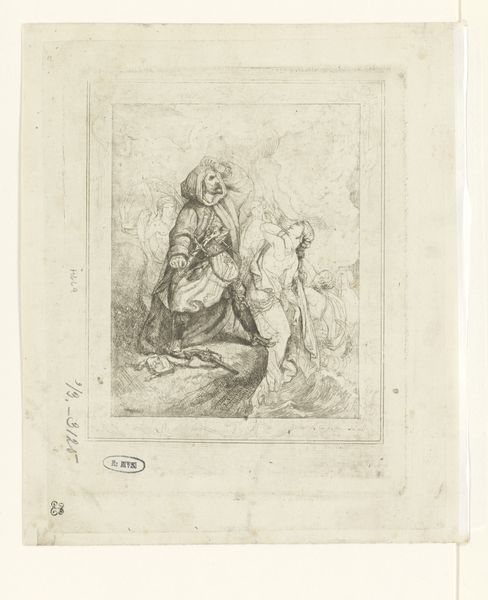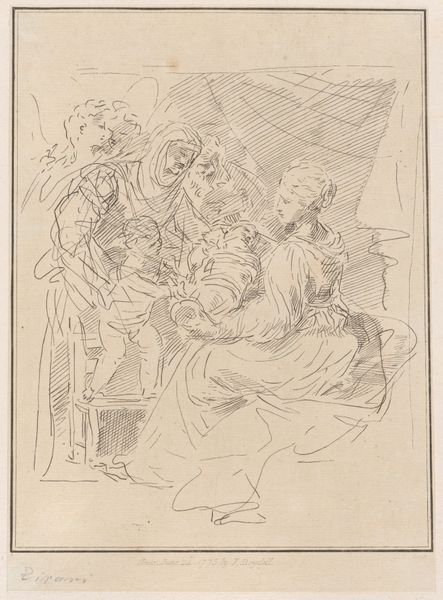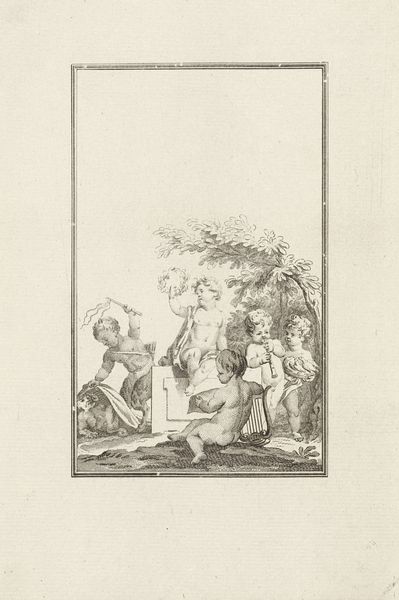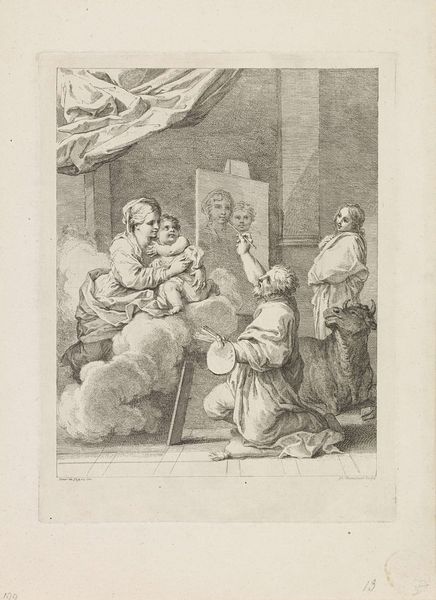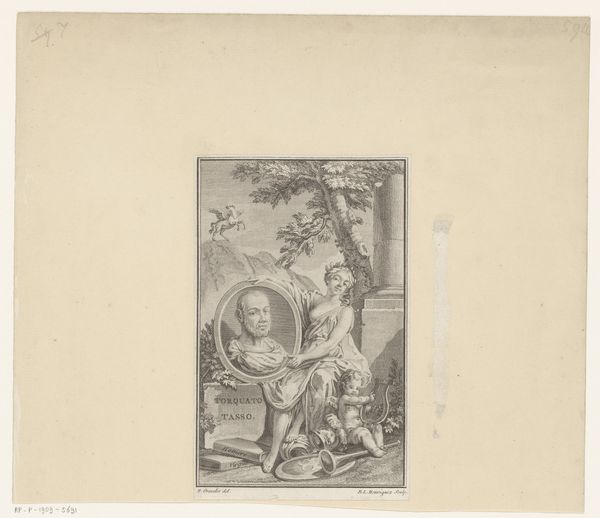
drawing, print, etching, pen
#
drawing
#
light pencil work
#
quirky sketch
#
neoclassicism
# print
#
pen sketch
#
etching
#
pencil sketch
#
old engraving style
#
figuration
#
personal sketchbook
#
pen-ink sketch
#
sketchbook drawing
#
pen
#
genre-painting
#
sketchbook art
#
initial sketch
Dimensions: height 86 mm, width 101 mm
Copyright: Rijks Museum: Open Domain
Pieter de Mare made this etching, "Blind man with attendant," in the Netherlands, sometime before his death in 1796. It offers an interesting glimpse into Dutch society and its attitudes toward disability at the end of the 18th century. De Mare was part of a larger artistic community in the Netherlands that self-consciously tried to move away from the manner of the Old Masters such as Rembrandt. He turned to ordinary, everyday scenes. This image creates meaning through the sharp contrast between the well-dressed blind man and his modestly dressed attendant. It comments on the social structures of its time, hinting at the economic disparities within Dutch society. To fully understand this artwork, one might delve into historical documents, such as charity records and social commentaries, to gain a deeper understanding of the treatment of disabled people in the Netherlands during this period. Art, after all, doesn't exist in a vacuum; it reflects and is shaped by the social and institutional contexts in which it is created.
Comments
No comments
Be the first to comment and join the conversation on the ultimate creative platform.
